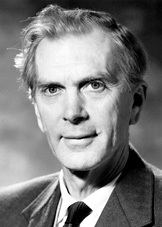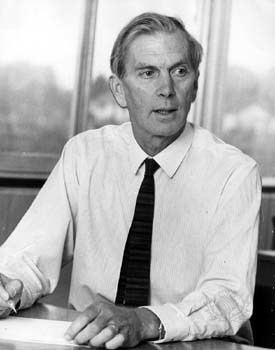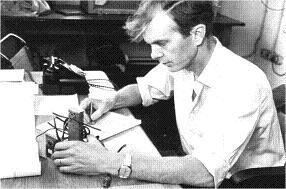Nationality United Kingdom Role Astronomer Name Martin Ryle | Doctoral advisor J. A. Ratcliffe Fields Astronomy | |
 | ||
Born 27 September 1918Brighton, England ( 1918-09-27 ) Institutions University of CambridgeGresham College Doctoral students Malcolm LongairPeter ReadHarry van der LaanAndrew WilsonGareth Wynn-Williams Died October 14, 1984, Cambridge Books Towards the Nuclear Holocaust, Martin Ryle's Letter Education Bradfield College, Christ Church, Oxford, University of Oxford, Trinity College, Cambridge Similar People Antony Hewish, Jocelyn Bell Burnell, Malcolm Longair, Simon Mitton, Anthony Rudolf | ||
2 today in history birthday of radio astronomer sir martin ryle 27 sept 2010
Sir Martin Ryle FRS (27 September 1918 – 14 October 1984) was an English radio astronomer who developed revolutionary radio telescope systems (see e.g. aperture synthesis) and used them for accurate location and imaging of weak radio sources. In 1946 Ryle and Vonberg were the first people to publish interferometric astronomical measurements at radio wavelengths, although Joseph Pawsey from the University of Sydney claimed to have actually made interferometric measurements earlier in the same year. With improved equipment, Ryle observed the most distant known galaxies in the universe at that time. He was the first Professor of Radio Astronomy at the University of Cambridge, and founding director of the Mullard Radio Astronomy Observatory. He was Astronomer Royal from 1972 to 1982. Ryle and Antony Hewish shared the Nobel Prize for Physics in 1974, the first Nobel prize awarded in recognition of astronomical research.
Contents
- 2 today in history birthday of radio astronomer sir martin ryle 27 sept 2010
- Sir martin ryle john goldberg
- Education and early life
- Career and research
- Astronomy
- War peace and energy
- Honours and awards
- Lectures
- Personal life
- References

In the 1970s, Ryle turned the greater part of his attention from astronomy to social and political issues which he considered to be more urgent.
Sir martin ryle john goldberg
Education and early life

Martin Ryle was born in Brighton, the son of Professor John Alfred Ryle and Miriam (née Scully) Ryle. He was the nephew of Oxford University Professor of Philosophy Gilbert Ryle.
After studying at Bradfield College, Ryle earned a physics degree from Christ Church in the University of Oxford. In 1939, Ryle worked with the Telecommunications Research Establishment (TRE) on the design of antennas for airborne radar equipment during World War II. After the war, he received a fellowship at the Cavendish Laboratory.
Career and research

The focus of Ryle's early work in Cambridge was on radio waves from the Sun. His interest quickly shifted to other areas, however, and he decided early on that the Cambridge group should develop new observing techniques. As a result, Ryle was the driving force in the creation and improvement of astronomical interferometry and aperture synthesis, which paved the way for massive upgrades in the quality of radio astronomical data. In 1946 Ryle built the first multi-element astronomical radio interferometer.

Ryle guided the Cambridge radio astronomy group in the production of several important radio source catalogues. One such catalogue, the Third Cambridge Catalogue of Radio Sources (3C) in 1959 helped lead to the discovery of the first quasi-stellar object (quasar).
While serving as university lecturer in physics at Cambridge from 1948 to 1959, Ryle became director of the Mullard Radio Astronomy Observatory in 1957 and professor of radio astronomy in 1959. He was elected a Fellow of the Royal Society (FRS) in 1952, was knighted in 1966, and succeeded Sir Richard Woolley as Astronomer Royal from 1972–1982. Ryle and Antony Hewish shared the Nobel Prize for Physics in 1974, the first Nobel prize awarded in recognition of astronomical research. In 1968 Ryle served as professor of astronomy at Gresham College, London.
Astronomy
Ryle was sometimes considered difficult to work with – he often worked in an office at the Mullard Radio Astronomy Observatory to avoid disturbances from other members of the Cavendish Laboratory and to avoid getting into heated arguments, as Ryle had a hot temper. Ryle worried that Cambridge would lose its standing in the radio astronomy community as other radio astronomy groups had much better funding, so he encouraged a certain amount of secrecy about his aperture synthesis methods in order to keep an advantage for the Cambridge group.
Ryle had heated arguments with Fred Hoyle of the Institute of Astronomy about Hoyle's Steady State Universe, which restricted collaboration between the Cavendish Radio Astronomy Group and the Institute of Astronomy during the 1960s.
War, peace and energy
Ryle was a new physics graduate and an experienced radio 'ham' in 1939, when the Second World War started. He played an important part in the Allied war effort, working mainly in radar countermeasures. After the war, "He returned to Cambridge with a determination to devote himself to pure science, unalloyed by the taint of war."
In the 1970s, Ryle turned the greater part of his attention from astronomy to social and political issues which he considered to be more urgent. With publications from 1976 and continuing, despite illness until he died in 1984, he pursued a passionate and intensive program on the socially responsible use of science and technology. His main themes were:
In 1983 Ryle responded to a request from the President of the Pontifical Academy of Sciences for suggestions of topics to be discussed at a meeting on Science and Peace. Ryle's reply was published posthumously in Martin Ryle's Letter. An abridged version appears in New Scientist with the title Martin Ryle's Last Testament. The letter ends with "Our cleverness has grown prodigiously – but not our wisdom."
Honours and awards
Ryle was awarded numerous prizes and honours including:
Lectures
In 1965 Ryle co-delivered the Royal Institution Christmas Lecture on Exploration of the Universe.
Personal life
Ryle was an amateur radio operator, and held the GB-Callsign G3CY. Ryle married Rowena Palmer in 1947. He died on 14 October 1984, in Cambridge. He was celebrated on a first class stamp issued as part of a set of eminent Britons on 8 October 2009.
